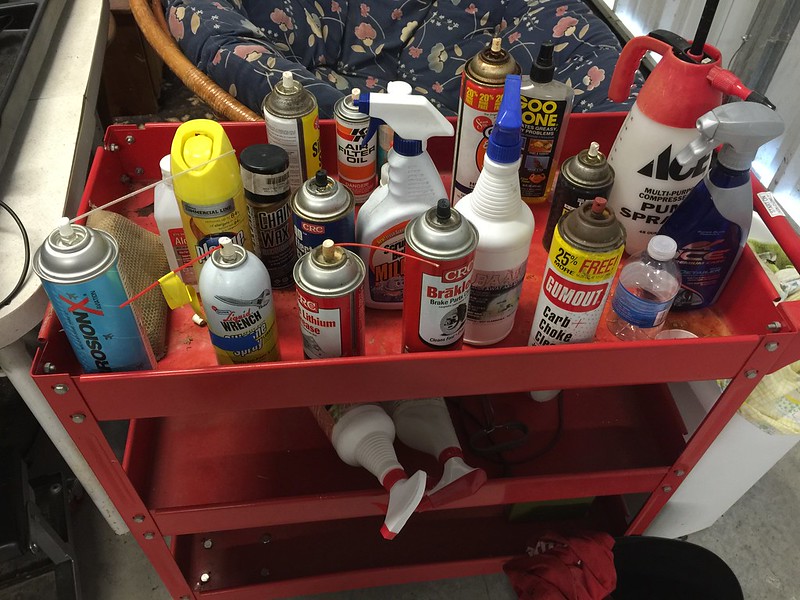TylerSC
Pre-takeoff checklist
I am the proud new owner of a 1965 Cherokee 140. The control surface hinges and the little ball joints on the flaps etc. are all very gunky. What is the best way to clean these up?

Probably true. I bought two cans each of LPS 1, 2, & 3 at least ten years ago. About $10/can IIRC. I still haven't used up that initial supply, so it's not like buying $100 aviation specific cleaning products when the $10 auto version works just as well or better. That's where the big sucker money is spent!I have never seen the benefit of the LPS brand, at least when it comes to basic lubrication.
The wrong lube can cause trouble.
LPS dries out.
Oil on piano hinges invites dust, which gets in there and the hinges eat themselves.
Cessna specifies Royco 363 (actually, a MIL-spec oil, and the 363 meets it) and it doesn't dry out nearly so fast as the LPS. They also specify dry graphite for piano hinges (ailerons), which is hard to get in there. I mix a bit with brake cleaner in a syringe and drip it on the hinge seams; it wicks in and the brake cleaner dries and leaves the graphite where it needs to be.
People LPS flap rollers, and it dries and eventually gums and seizes the rollers and they scuff up the tracks. Big job to rectify that. The gunk also attracts dust, causing abrasion and further stiffening the gunk. There's a tiny bit of grease in a flap roller, and a drop of Royco will wick in there and rejuvenate it without creating the mess and wear. Same with cable pulleys.
People LPS flap rollers, and it dries and eventually gums and seizes the rollers and they scuff up the tracks. Big job to rectify that. The gunk also attracts dust, causing abrasion and further stiffening the gunk.
I hate vague "LPS" comments.
LPS-1 Greaseless lubricant that penetrates quickly, displaces moisture, and will not attract dust or dirt.
- Provides a dry, thin, lubricating film
- Resists oil, dust, and dirt build-up
LPS-2 Heavy-Duty Lubricant - The strong, oily film multi-purpose lubricant, and penetrant with added corrosion protection.
- Ideal for delicate mechanisms
- Strong, multi-purpose lubricant, and penetrant
- Provides a non-drying, light, oily film for use on indoor/outdoor equipment
- Reduces wear caused by friction and corrosion
- Loosens rusted or frozen parts
- Strong, multi-purpose lubricant and penetrant with added corrosion protection
Yup I agree with Tim 100% . LPS 2 is great stuff.I usually just clean them up when I wash the plane and then lubricate with LPS-2 afterwards.
most people wash the top of their plane very few wash the bottom. Might be they figure all that oil on the belly of the plane stops corrosion.Ensuring that the flap rollers are actually rolling is a part of every preflight inspection. And my tracks are less than 25% worn after 58 years.
And some people actually keep their toys clean so dust and grime can't grind up moving parts.
That's what routine maintenance is all about. Clean out the old and reapply. Every lubricant and corrosion inhibitor I've seen attracts dust. That's why Boeing has in their control cable lubrication procedure to not lubricate corrosion resistant steel cables and even mentions excessive wear due to attracted dust.
Royco 363 has one milspec listed: MIL-PRF-7870C
"Mineral oil based lubricant with modern additives" That tells a lot!
I've seen Kroil stain white paint.I like Kroil for hinges and such. Good solvent for cleaning and stays lubricated for a long while. Just wipe off the excess as it's certainly not a dry lubricant and will attract dust and dirt.
https://www.amazon.com/Kano-Aerokroil-Penetrating-aerosol-AEROKROIL/dp/B000F09CEA
